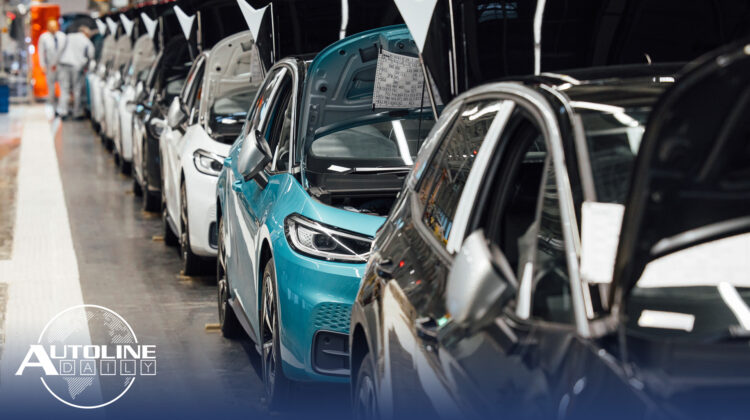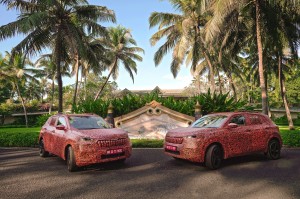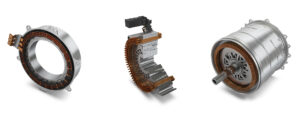
Listen to “AD #3001 – Chip Shortage Dents Auto Production; Waymo CEO Criticizes Tesla FSD; Faraday Updates In-Car Software” on Spreaker.
Follow us on social media:
Runtime: 9:19
0:08 Chip Shortage Will Clobber Q1 Auto Production
0:50 TSMC To Prioritize Auto Chip Production
1:08 India Blocking GM’s Effort to Cease Operations
1:38 Tesla to Struggle in India Its First Few Years
2:23 Skoda Launches New Crossover for India
3:49 Faraday Future Updates In-Car Software
4:57 Scania Improves ICE Truck Efficiency
5:52 Boeing To Convert Fleet to Run on Biofuel
6:47 Waymo CEO Criticizes Tesla Full Self Driving Tech
7:52 Schaeffler Reaping Benefits From E-Motor Business
8:22 VW Still a Powerful Industrial Machine
Visit our sponsors to thank them for their support of Autoline Daily: Bridgestone, Intrepid Control Systems, and Magna.
This is Autoline Daily, the show dedicated to enthusiasts of the global automotive industry.
CHIP SHORTAGE WILL CLOBBER Q1 AUTO PRODUCTION
That global chip shortage is really hurting the auto industry as it tries to recover from the pandemic. LMC Automotive estimates that automakers will produce one million fewer vehicles during the first quarter of the year due to the shortage of semiconductors. China will be hit the hardest with 250,000 units in lost production. Followed by North America at 230,000 units and Europe at 200,000. Japan will also take a hit but South Korea, which is a major producer of chips, faces minimal impact. Second quarter production may also see some disruption but analysts expect chip supplies to be back to normal by the summer.
TSMC TO PRIORITIZE AUTO CHIP PRODUCTION
And perhaps this could speed things along. Reuters reports that the Taiwan Semiconductor Manufacturing Company or TSMC, the world’s largest contract chipmaker, will prioritize production of auto chips if it’s able to increase capacity.
INDIA BLOCKING GM’S EFFORT TO CEASE OPERATIONS
And there’s a lot of action over in India. First up, General Motors is running into issues over its decision to cease operations in the country. Last week, an Indian state blocked the automaker’s application to shut down a plant after protests by workers who demanded GM continue production or continue paying them. GM stopped selling vehicles in India in 2017. GM said it will seek a reversal of the state’s order as soon as possible.
TESLA TO STRUGGLE IN INDIA IN ITS FIRST FEW YEARS
And while GM wants out of India, Tesla is getting set to launch its vehicles there. But an analyst at LMC Automotive says sales will be weak for the company and estimates that in the first five years, it will only sell 50 to 100 Model 3s annually. Part of that is due to customers not being interested in EVs, only 5,000 were sold last year in India. Pricing will also be an issue, Tesla plans to sell the Model 3 for around $65,000 to $75,000, which means it will only be affordable to the wealthy. But sales could take off in the next 7 to 8 years if it starts producing vehicles locally in India.
SKODA LAUNCHES NEW CROSSOVER FOR INDIA
And in our last bit of India news, Skoda, which is part of the VW Group, is launching a new crossover that is specifically built for the Indian market, called the Kushaq. It will be available with two gasoline engines but the company didn’t share many more details other than it will make its world debut in March.
FARADAY FUTURE UPDATES IN-CAR SOFTWARE
Despite not having sold a single vehicle, EV startup Faraday Future is showing off the software capability of its system. Like modern video game controllers, the buttons on Faraday Future’s steering wheel aren’t limited to a single function. They can be reconfigured to control a number of different tasks. Want a certain button to be the volume control and another for skipping radio presets? Cool, you can do that or they can control something completely different. Faraday Future is also integrating AI voice recognition and messaging playback into its system as well as the ability to share locations with the vehicle. Like what you’re reading in a Yelp review about a nearby restaurant and want to go? Share the location with your vehicle and it’s easy to pull up right in the navigation screen. It’s cool stuff but we still don’t know when Faraday will start selling its vehicles. If it does, it’s sticking with what we’ve seen from them all along. It’s more about the in-cabin user experience rather than the driving experience.
SCANIA IMPROVES ICE TRUCK EFFICIENCY
While electric commercial trucks are just starting to hit the market, Scania is helping to improve the efficiency of one of its current ICE trucks. It developed a system that allows the rear axle on its dual rear or tandem axle truck to fully disengage. A ‘dog clutch’ inside the axle allows it to disengage, which can be done at any speed as long as the truck is not carrying too much weight. When the disengagement is made, the truck’s air suspension system raises to take the tires of the rear axle off the ground. This not only lowers the rolling resistance but also improves the truck’s turning radius. Scania says the system adds about 60 kilograms or 132 pounds, but improves fuel consumption by up to 6%.
BOEING TO CONVERT FLEET TO RUN ON BIOFUEL
Airplane company Boeing said that by 2030 its entire fleet will be able to run 100% on biofuel. While not our usual topic, here’s why we think this could be an important announcement. It could create a large-scale pipeline for low-carbon biofuel that’s affordable for use in passenger vehicles. Low-carbon biofuel drastically reduces the carbon footprint of an automobile and puts it closer to being on par with a BEV. Electrics are still our future but something like this could keep ICEs around a lot longer. We think it’s something to keep an eye on.
WAYMO CEO CRITICIZES TESLA FULL SELF DRIVING TECH
Tesla is charging $10,000 to customers for its full self driving technology, or FSD. But John Krafcik, the CEO of Waymo, doesn’t believe FSD will ever be fully autonomous. If he’s right, that could be a big problem for Tesla. Nearly two years ago Elon Musk said Tesla would have 1 million cars on the road in mid-2020 that would be able to drive by themselves. He also said that cars equipped with FSD would be worth $100,000 to $200,000, because they’ll generate $30,000 a year in revenue for their owners. A key reason why Tesla’s stock is so valuable is that investors are counting on FSD to generate massive profits. But Krafcik says that FSD is merely a really good driver assistance system, and will never achieve Level 5 autonomy. We should know who’s right later this year. Either Tesla’s stock will take a hit, or Krafcik will be putting salt and pepper on the crow he’ll have to eat.
SCHAEFFLER REAPING BENEFITS FROM E-MOTOR BUSINESS
Schaeffler, the large German supplier, is reaping the rewards of anticipating the move to electric vehicles. Three years ago it created a new business unit, acquiring the talent, technology and manufacturing capability to make e-motors. And now it’s prepared to mass produce electric drivetrains and is already on the Audi e-Tron. Schaeffler makes a range of motors from 20 kw to 300 kW to accommodate everything from small cars to heavy trucks.
VW STILL A POWERFUL INDUSTRIAL MACHINE
The Volkswagen group will not release its full financial earnings for 2020 for another month or so. But it did give us a preliminary peek at the numbers. It’s operating profit will be 10 billion euros, which is a very impressive number. But VW warns that special charges related to its diesel problems will chip away at that number. It also expects to generate a net cash flow of 6 billion euros, which is a significant pile of cash. Despite the massive cost of its diesel scandal, Volkswagen is still a very powerful industrial machine.
But that wraps up today’s show, thanks for watching.
Thanks to our partner for embedding Autoline Daily on its website: WardsAuto.com

John McElroy is an influential thought leader in the automotive industry. He is a journalist, lecturer, commentator and entrepreneur. He created “Autoline Daily,” the first industry webcast of industry news and analysis.








